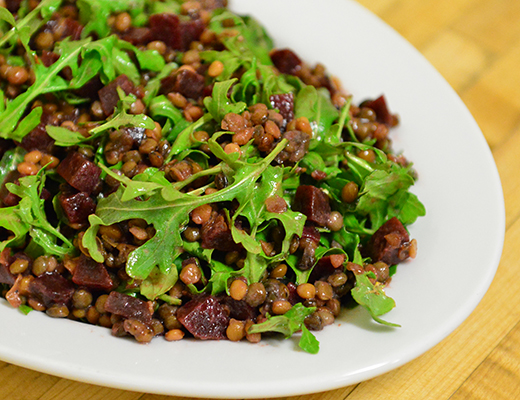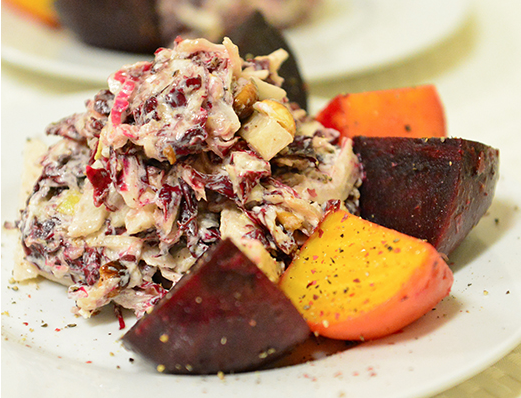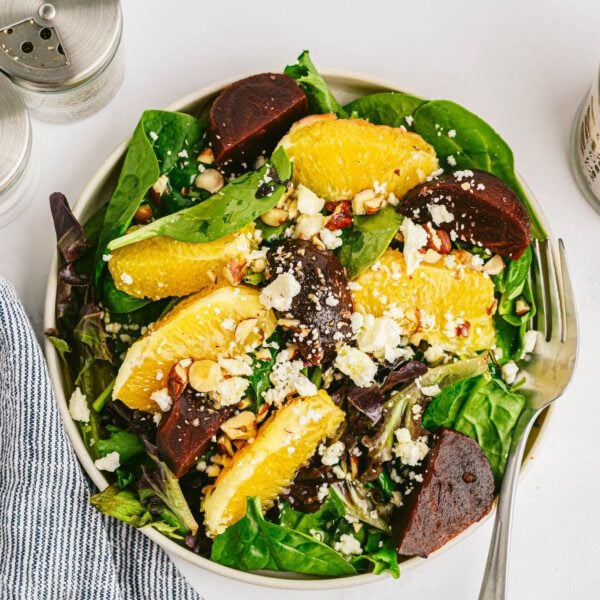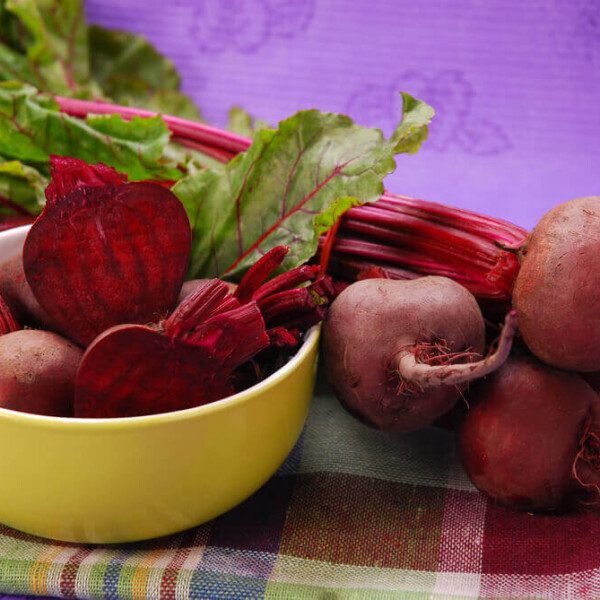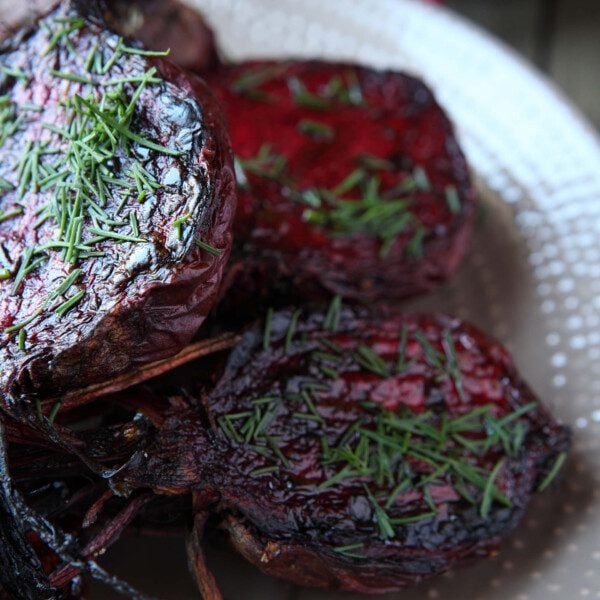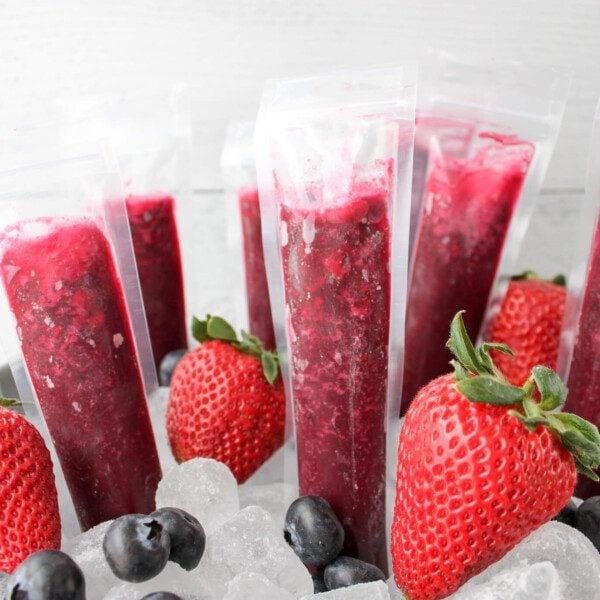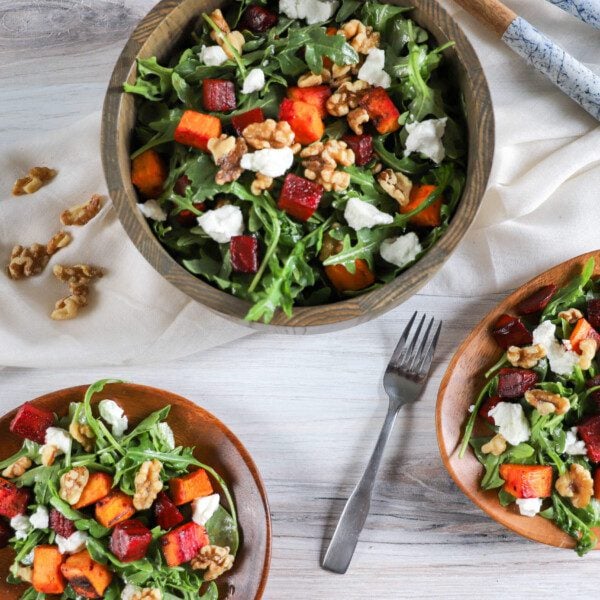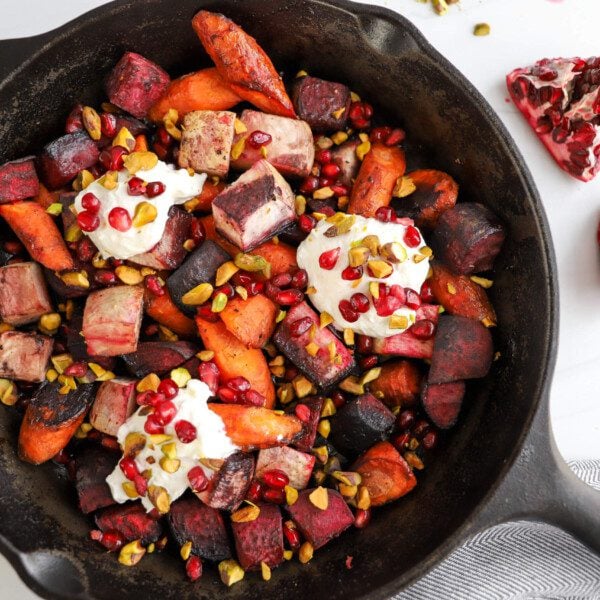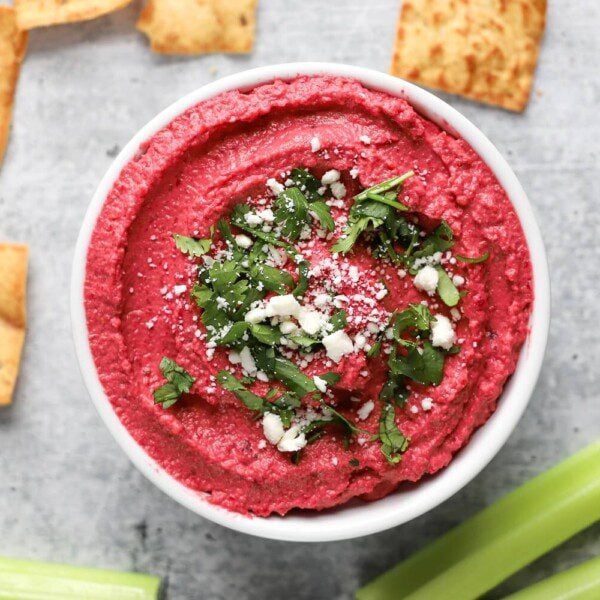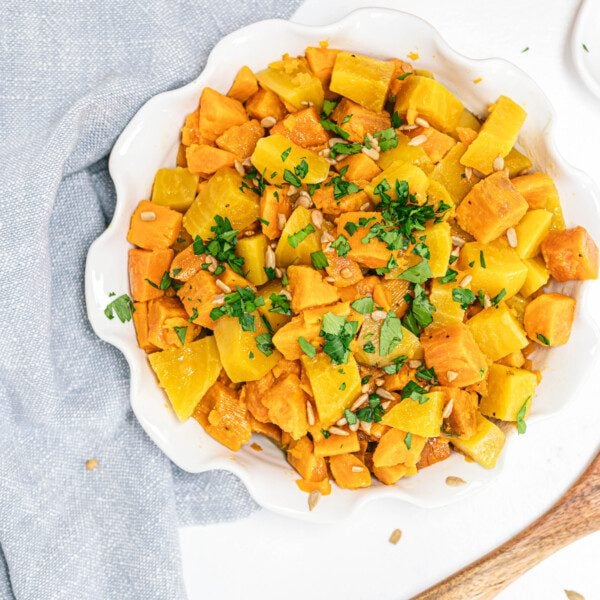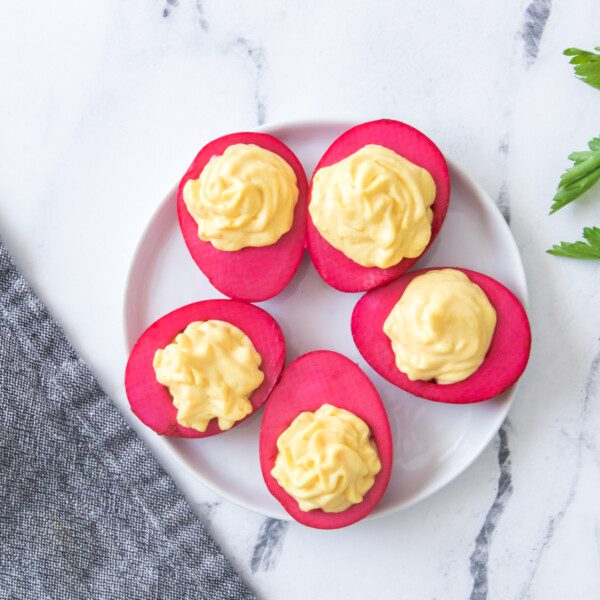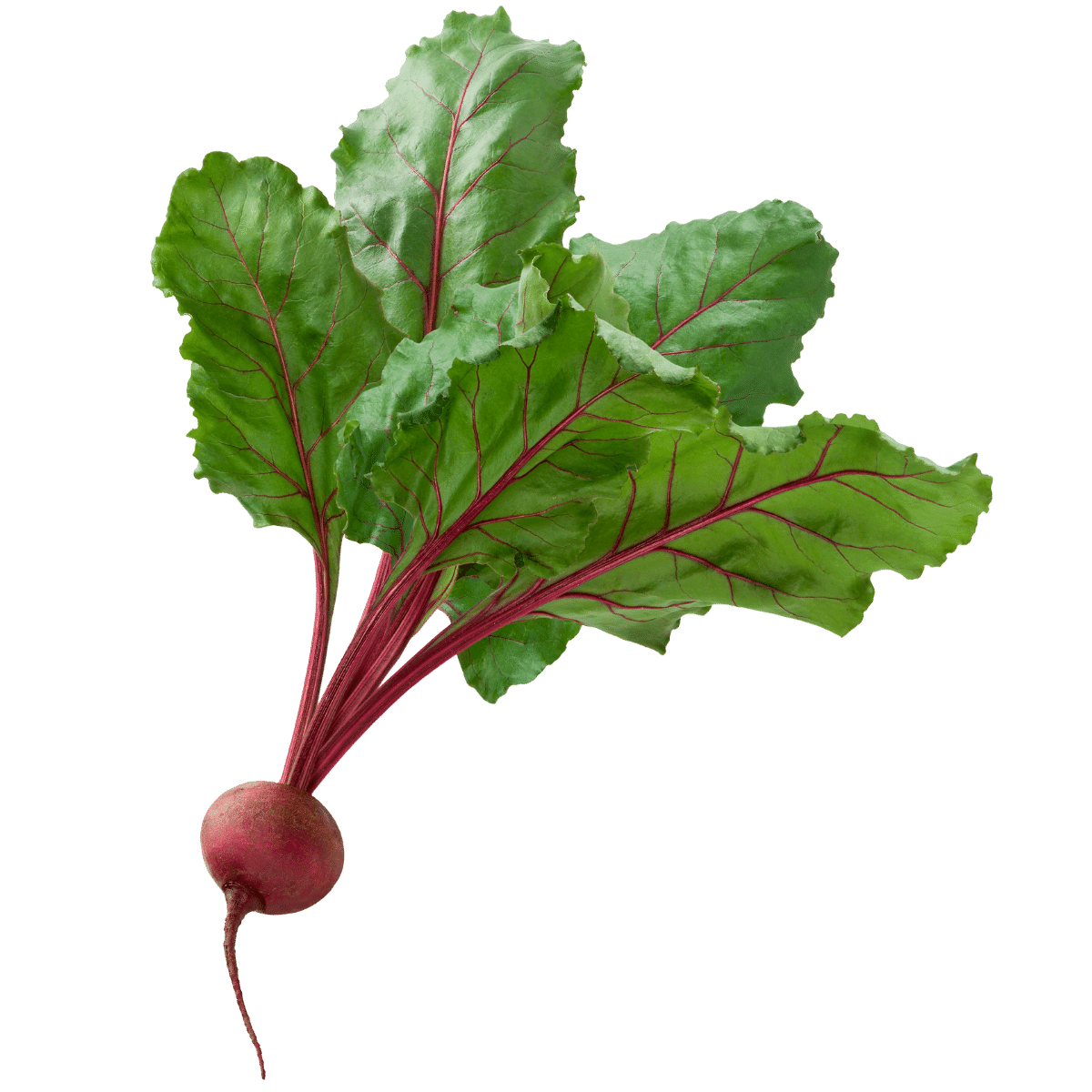
How to Select Beets
- Select small to medium-sized beetroots as these will be the most tender. Large beets are typically less flavorful, more fibrous, and tough.
- Select beets with smooth skin and a deep, rich color. They should be firm and heavy for their size.
- Avoid beets that are nicked, bruised, or shriveled.
- If the greens are still attached, look for ones that are leafy, bright green. Avoid leaves that are yellowed, wilted, or spotted.
When are Beets in Season?
Beets are a cool-season vegetable crop; they grow best in cooler temperatures during spring and fall. They can grow in warmer weather, but the result isn’t nearly as good.
While you can find beets year-round, winter is the prime time to buy baby beets, which are more tender and sweeter than mature ones.
Varieties of Beets
Did you know that not all beets are red? They come in various colors, sizes, textures, flavors, and more!
Red beets are common and are what most of us think about when we hear “beets.” They are amazing root vegetables for storage — they might lose a touch of tenderness, but they also gain some sweetness over time.
You can use red beets in many ways, the most common being roasting for a side dish. You can also use them in other recipes, like borscht!
Golden beets are a little less sweet but have a mellow flavor that’s less earthy. They are great for adding a bright, zesty color to any salad or roasted dish! They also don’t stain other vegetables pink, like red beets.
Chioggia beets are a striped variety and range from brilliant red to subtle orange and yellow. You can use them as you would any other beet, but their stunning coloring will fade as you cook them.
Baby beets are any beets that were pulled early in spring. They are common, even though many sell them as specialty vegetables. They go great with any greens and have a tender texture and sweet flavor.
Beet Nutrition Facts & Benefits
Beetroots are a great, healthy vegetable that can fit into any diet.
One cup of these nutrient-packed root veggies contains:
- Approximately 58 calories
- 0.2 grams of fat
- 2.2 grams of protein
- 13 grams of carbohydrates
- 9.2 grams of sugar
- 3.8 grams of fiber
- 442 milligrams of potassium
- 21.76 milligrams of calcium
In addition, beets have many health benefits:
- Beets are rich in folate, which plays a key role in heart health, growth, and development.
- They can also help keep your blood pressure down.
Beets also contain pigments called betalains — these pigments possess multiple anti-inflammatory properties.
How to Store Beets
How To Store Fresh Beets: Do not wash beets before storing. If greens are still attached, first remove them from the stem, leaving about an inch or two of stem attached. (If the greens are left attached, they will pull moisture from the beetroot). Place the beetroots in a plastic bag and remove as much air as possible. Store the bag in the refrigerator for up to three weeks.
How To Store Beet Greens: Do not wash beet greens before storing. Place greens in a plastic bag (a separate bag from the beetroots) and remove as much air as possible. Store in the bag in the refrigerator for up to four days.
How To Store Cooked Beets: Place cooked beets in an airtight container with a lid or wrap in plastic wrap or aluminum foil. Refrigerate for up to five days. Cooked beets can also be frozen (see next).
How To Freeze Beets: Cooked beets can be frozen but not raw beets. Once beets have been cooked and cooled, remove the skins (the skin will peel right off). Slice or chop the beets and flash freeze on a cookie sheet. Once the beet pieces are frozen through, transfer to a freezer bag and freeze for up to one year.
How to Prepare Beets
Many people claim to dislike beets; however, they likely haven’t had them prepared well!
The most common ways to prepare beets include roasting, boiling, and steaming – and they can be delicious, no matter how you make them. The key is experimenting and finding the best beet-cooking technique that works for you.
If you want to try roasted beets, which are quite sweet and have a subtle earthy flavor, you want to cut them into wedges, toss them in oil and seasonings, wrap in foil, and bake them at high heat for about an hour.
Steaming beets helps them retain more of their vitamins and minerals compared to boiling them, and it’s extremely easy! Cut your beets into small cubes, boil some water in a stockpot, and steam the beet pieces until tender — about 15 minutes for 1-inch wedges.
You can also make beet chips if you want a crispy, sweet snack. Slice your beets thin, toss them with salt and oil, and bake at a low temperature for two to three hours until they’re nice and crispy!
Yes, you can eat beets raw, but they are very tough — if you want to add raw beets to your salad, you’ll need to grate them extra-thin, or they will be almost inedible.
